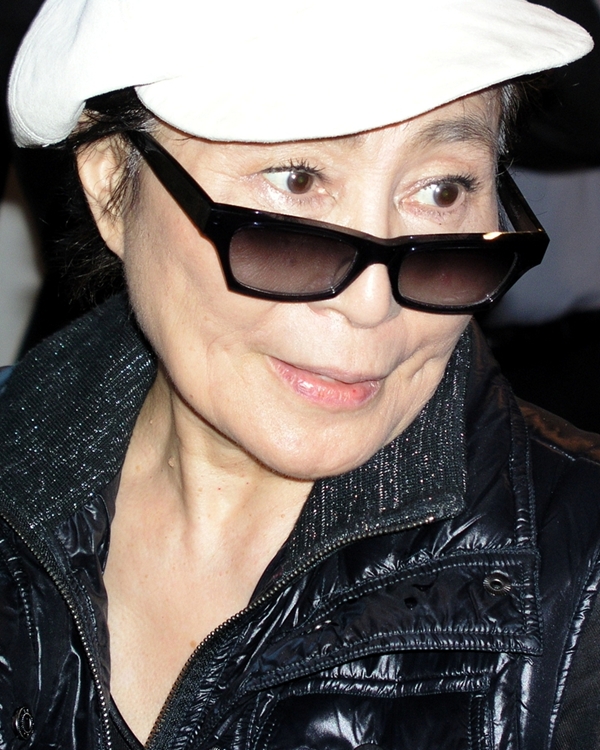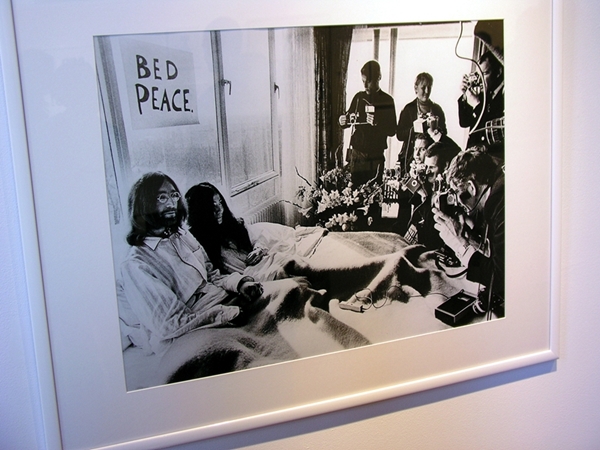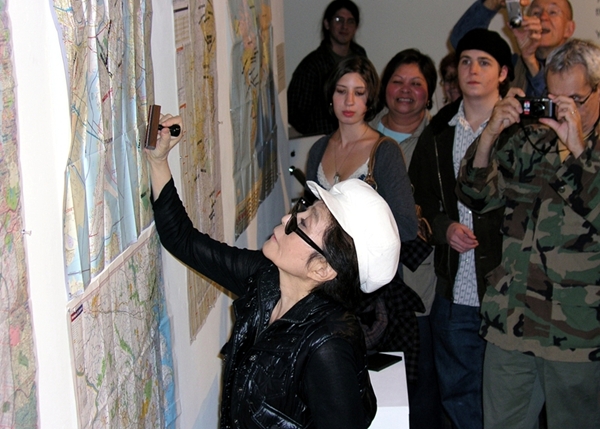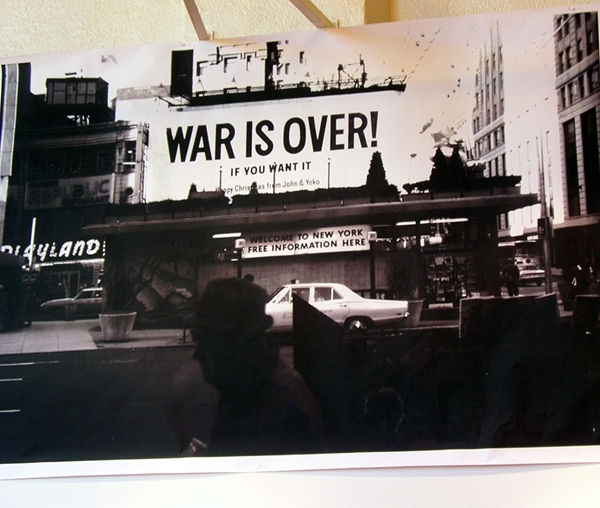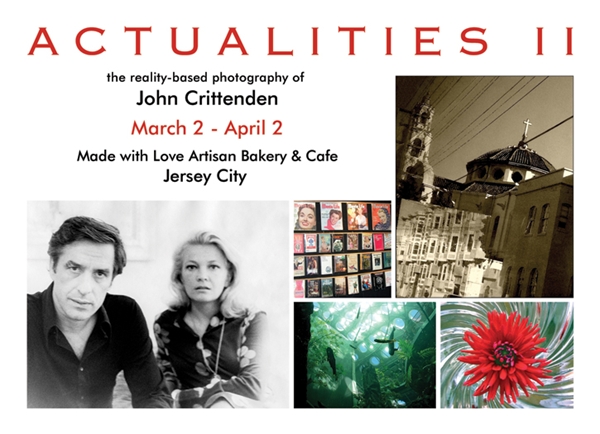
I’m pleased to be having my second solo show, less than a year after my first, at Made With Love Artisan Bakery & Cafe in Downtown Jersey City. Included in Actualities II are my portraits of John Cassavetes and Gena Rowlands, Liv Ullmann and Judy Collins, taken in the mid-1970s when I was a young journalist.
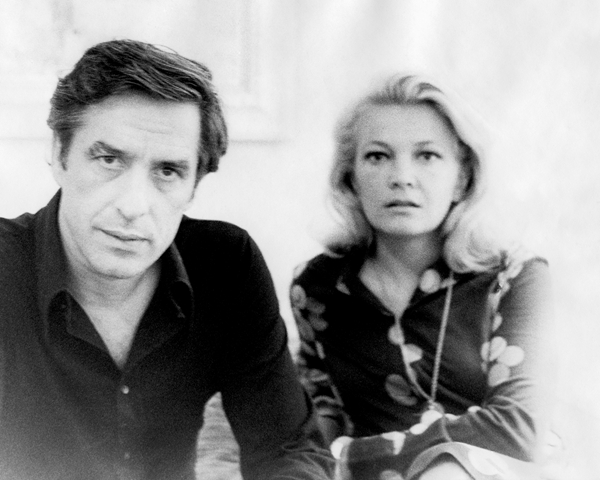
I was lucky to secure the 9 a.m. slot to interview John Cassavetes and Gena Rowlands the morning after “A Woman Under the Influence” — many consider it to be the greatest of the films they made together — debuted at the 1974 New York Film Festival at Lincoln Center. The interview was done in their hotel suite on West 58th Street, and they were still waking up when we began. He appeared first, and soon she came into the room and he presented her to me with admiration and pride in his voice. She seemed shy, almost fragile, and was even more strikingly beautiful than when acting on screen. At the end of the interview, I pulled out my Minolta 35mm film camera and took a few pictures without missing a beat. Having chatted for the better part of an hour, they were comfortable, weren’t asked to pose, and I didn’t use a flash. There was plenty of soft incandescent in the room and morning light was coming through the curtains. And so I captured the images of the director now remembered as the father of independent film in America, as well as a fine actor, and his actress wife, who is still beautiful and still making interesting movies today.
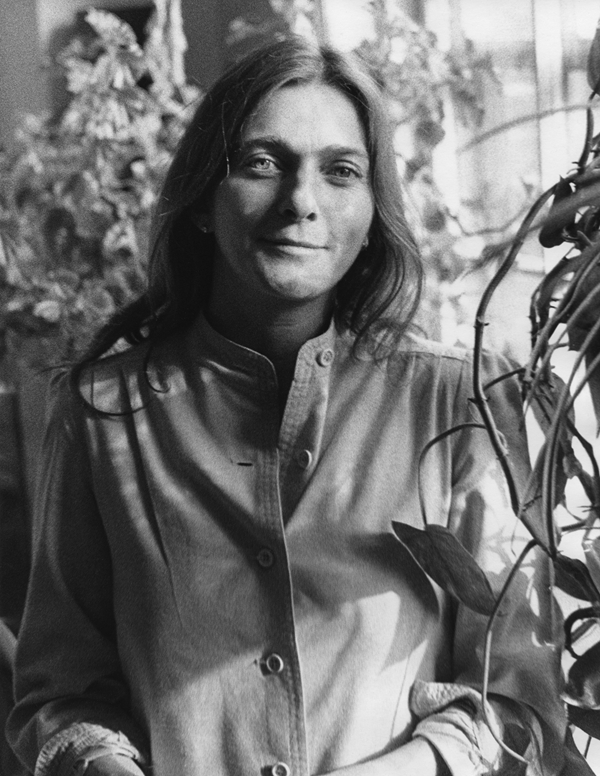
Judy Collins welcomed me into her apartment on Manhattan’s Upper West Side to discuss a film, “Antonia: A Portrait of the Woman,” which she produced and Jill Godmilow directed. The 1974 feature documentary tells the compelling but not widely known story of Antonia Brico, who in 1938 was the first woman to conduct the New York Philharmonic.
Born in The Netherlands, Brico grew up in California and was an accomplished pianist when she left high school, and already had experience in conducting. She graduated from the University of California, Berkeley, in 1923 and in 1927 entered the Berlin State Academy of Music, becoming the first American to graduate from its master class in conducting. She debuted as a professional conductor with the Berlin Philharmonic Orchestra in 1930. In 1934, back in the States, she was appointed conductor of the new Women’s Symphony Orchestra, which in 1939 became the Brico Symphony Orchestra after it admitted men. She conducted at the New York World’s Fair. But there were discouragingly few opportunities.
In 1942, she settled in Denver, Colorado and spent the rest of her life there, founding several local musical groups, conducting the Denver Symphony Orchestra, playing a major role in the city’s cultural life. She also taught piano, and this is where Judy Collins met her. She was one of Antonia Brico’s piano students.
I think it was extraordinary that Judy Collins, whose own musical career was going full swing in 1974, invested time and money in making a film tribute to a woman who was a hero in her life and who, she felt, had not gotten the artistic recognition she deserved in a field that was, and still is, predominantly male. And Judy Collins made sure the film was done right. “Antonia: A Portrait of the Woman” was nominated for an Academy Award in the documentary category. Antonia Brico died in Denver in 1989, at age 87.
After our interview, I photographed Judy Collins among her houseplants in her south-facing living room. Our visit was a particular thrill for me, of course, for hers was and is one of the great voices of my generation, and that interview was done only seven short years after her album “Wildflowers” was on every turntable in every college dorm room in America, including my own.
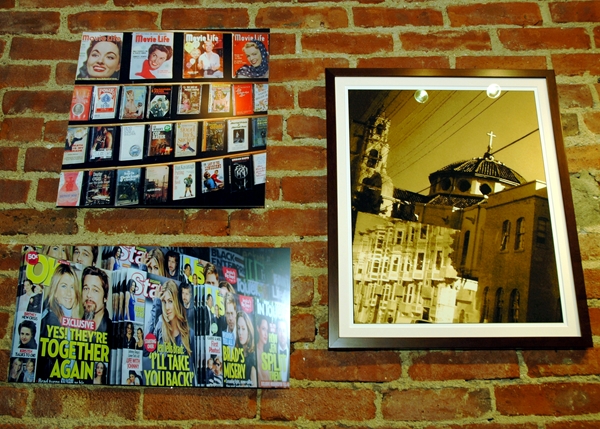
These photographs were taken in San Francisco, a city I dearly love. “In the City of Saint Francis” is on the right, a sepia-toned rendition of a single image. I think it has some feeling of the movement of the bus I was on when I took the exposure. I knew we would soon pass Mission Dolores, a tiny adobe church built in 1791 and the city’s oldest surviving structure, and I wanted to ready to snap it. I was shooting wildly, wondering what images I might get, kind of priming the camera. It turned out that this was the more interesting shot, a lucky shot totally unplanned. It’s a bit off-putting in color, with a phantom red digital zipper of words running through the middle, but when I took the color out and saw it in black and white I knew I had something. The lower left section of the image is the reflection in the bus window of the line of bay-windowed apartment houses across the street. The large church building with the cross on top is the modern basilica of Mission Dolores Church. Altogether, it is a vision of the city as it has looked, in this spot, for more than a half-century.
The subject is popular media in the photos at left, which are printed on metal and “float” on the wall, their corners as sharp as any print. Artists working in all mediums are fashioning comments these days on the supposed end of the print era, and these are mine. The relatively benign movie magazines from the 1940s and ’50s and the paperbacks with eye-catching covers displayed below them in the top photo were in the window of a used book store on Post Street. The magazines in the lower photo promise us, in January 2010, the latest “misery” in the lives of Jennifer and Brad and Angelina, none of which seems to have come to anything. I guess news was slow that week, the competition as cut-throat as ever. Whether such pages will still be viewed in one’s hands in 10 years time or will only be seen on screens I do not know. But I’m sure celebrity culture will continue to serve up the same formula “inside” exclusives. Inquiring minds will always want to know.
I’ve always been deeply ambivalent about the real place called Hollywood and about Los Angeles in general. When I first flew out for a visit, about 1970, I had a window seat and during our low approach to LAX I looked out over mile after flat mile of superblocks divided by major streets, all viewed as if through a light chartreuse filter. This was before clean air laws and mandated emissions controls on cars. The air burned my eyes on two occasions during my week-long stay, and I wondered how so many people could live there seemingly satisfied with conditions I could hardly tolerate. Fast forward about 40 years and I’m still not in love with L.A., but I do manage to have fun when I’m there.
This photo was snapped in February 2007 during the week before the Oscars were handed out. Hollywood Boulevard was closed to traffic for many blocks around the Kodak Theater, creating snarls and backups on all the other major roads, but I was able to find and park in one of three lots adjoining the back of the Hollywood Wax Museum so I could attend one of the screenings in a festival showcasing new Italian films at Grauman’s Chinese, on the same crowded block as the Kodak. When I got back to the car, night had fallen and the lights were on, and I knew I had to preserve this vision of Hollywood, a company town where billboards touting new product seem bigger and more numerous than anywhere else in the world, and where every actor hopes to achieve the immortality of John Wayne, Elvis Presley, Marilyn Monroe, Charlie Chaplin. I was especially taken with the way the museum’s mural incorporates the utility lines on the sides of the building. Nothing gets in the way of promotion in Tinseltown.
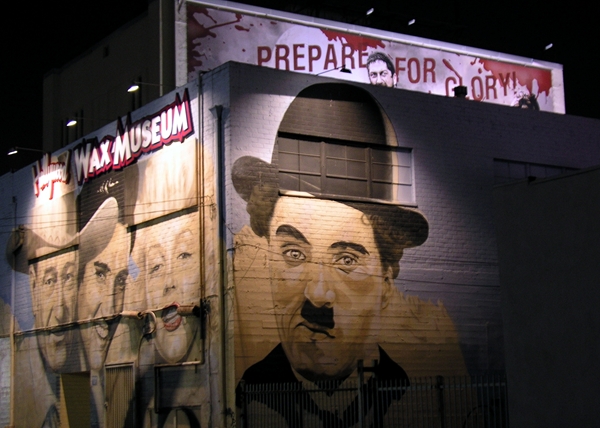
I don’t know that I’ve ever read much rock music criticism. I guess it’s like all writing about art — it helps readers find what they may not have known they wanted to listen to, helps win recognition for new artists, creates buzz – but once you know who moves you reading words and analysis can seem very beside the point.
Case in point: Leon Russell. I just ran across a quote on the Internet from Robert Christgau’s Record Guide (1981) review of the singer’s 1970 debut album as a single artist (backed by pals Harrison and Starr, Wyman and Watts, Clapton) that says that while his singing is “distinctive, and valid, it grates,” and that the album’s impressive songs would be more so if someone else were doing the vocals. Calling the album “weirder than you would expect,” Christgau gave it a B+. Well, thanks for listening, I guess.
Myself, the moment I heard Leon Russell would be headlining Hoboken’s Art and Music Festival this past Sunday afternoon, appearing at 4:30, I knew where I’d be, rain or shine. The first few hours of the festival did feature rain, and after it stopped the sky stayed gray and heavy, which cut attendance and seemed to keep smiles at a minimum, but the open tent at the foot of Washington Street wasn’t big enough to hold the appreciative crowd that loved what it was hearing.
Leon at 67 has lost a lot of the bounce he had 40 years ago; time does that. He sat fairly motionless in his Hawaiian shirt and white cowboy hat, and behind big shades. But his hands were moving up and down the keyboard and his mouth was at the mic, and the four much younger men he had with him, each a fine musician in solos, provided the visual oomph, the guitars and drums and backup vocals. The voice the noted critic took exception to so many years ago is still strong. Russell still owns every one of his hits. “Rollin’ in My Sweet Baby’s Arms,” “Georgia On My Mind,” “Delta Lady,” “Wild Horses.” And lots more, all rendered with maturity and majesty and fun.
I realized I hadn’t heard what’s categorized as Southern rock in so long I’d almost forgotten its power. In fact I was primarily there because I needed to hear him sing “A Song for You,” and until I heard it and a lot of mist got in my eyes I had indeed “forgotten” why. A friend who’s now gone home to Australia used to sing it in piano bars every time she was asked, and she was usually singing it to one of my best friends, her partner, now gone. I love the both of them “where there’s no space and time.” And on stage, Leon Russell was alone now and he was singing that song for us.
Then the younger guys came back and they all did “Roll Over, Beethoven” and “Good Golly Miss Molly,” and some other hits other people had way back when. Which was only natural, since according to one biography on the Internet Leon Russell was about 15 when he was lying about his age so he could tour in support of Jerry Lee Lewis. He’s come a long way from Lawton, Oklahoma, where he was born and started studying classical piano at age 3. A success in the music biz long before he became a star, he was the arranger of Ike and Tina Turner’s “River Deep, Mountain High” as well as a member of Phil Spector’s studio group and a collaborator with the Rolling Stones. I know a lot of people are glad Hoboken was one of the stops along the way in a long life filled with music that rolls like a river.
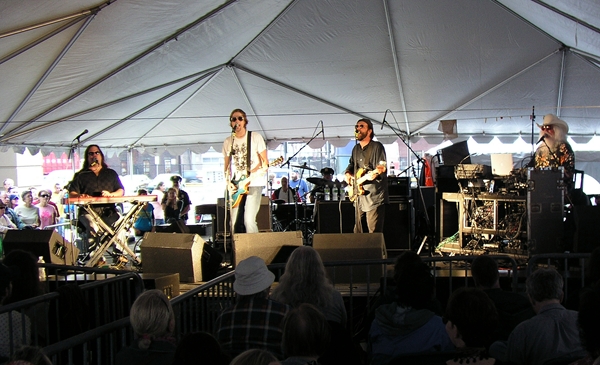
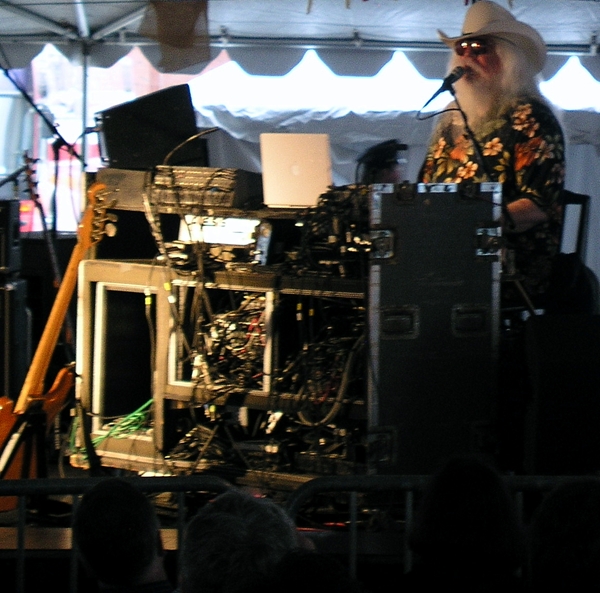
Kendra Shank is a fabulously gifted and inventive jazz singer. She works jazz originals and standards in unique ways, pushing them to abstraction yet never losing the thread. She’s led her own quartet for about 10 years, and was a West Coast singer based in Seattle before moving to New York in 1997. Born in California, at 19 she began her career playing guitar and singing folk and pop in the subways and sidewalk cafes of Paris. A Billie Holiday recording eventually prompted her to pursue a jazz career. Shirley Horn brought her to New York to perform as her guest at the Village Vanguard and co-produced her first album in 1994. Kendra Shank played guitar on Abbey Lincoln’s “Over the Years” CD as well as issuing her own “A Free Spirit: Abbey Lincoln Songbook” in 2007. With four albums of her own receiving critical acclaim over the years, she produced her fifth — “Mosaic” — in April 2009 and toured to promote it, drawing great reviews everywhere.
I’ve been a fan since Halloween 2008, when she and her group played a gig at 55 Bar, on Christopher Street near Seventh Avenue in Greenwich Village. Small and intimate, downstairs, unpretentious, no food, no cover charge — just my style. I wish a young couple at the bar hadn’t chattered continuously, and the lighting wasn’t particularly camera-friendly. But the singer and her longtime associates — Frank Kimbrough on piano, Dean Johnson on bass, Tony Moreno on drums, plus the young saxophonist who joined them for some songs — had me enchanted and impressed. I’ve since learned that not only has Kendra Shank played every important jazz venue, she’s taught clinics at music schools and at the New School. The quartet plays at the 55 Bar now and then. She must like it. Both brilliant and down to earth, Kendra Shank is the real deal.
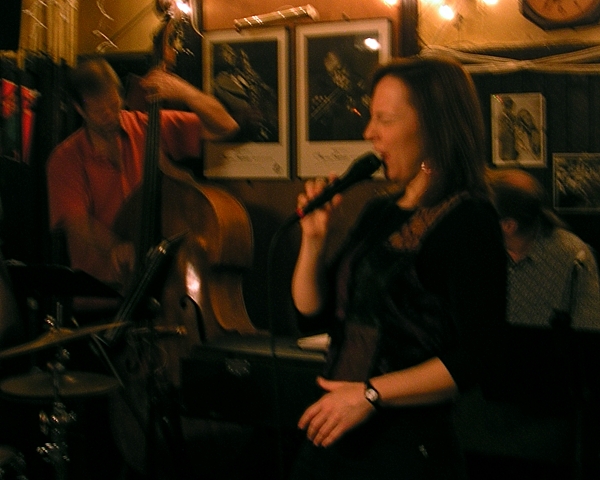
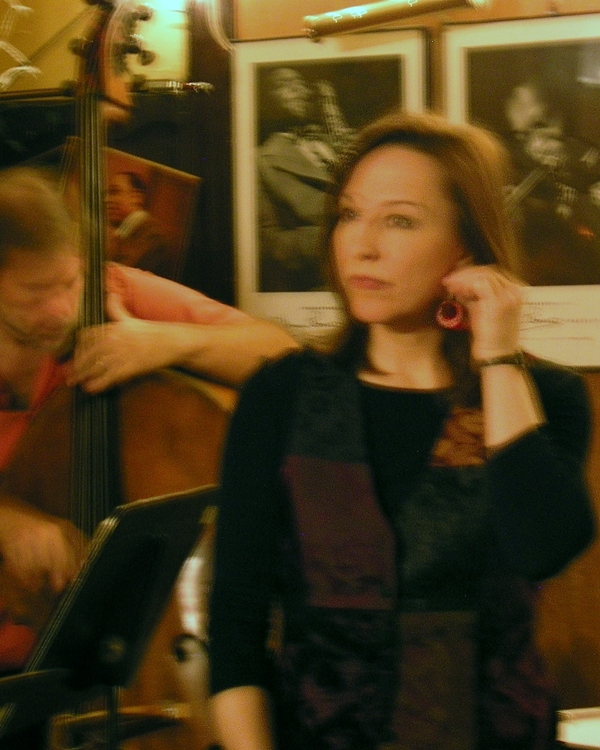
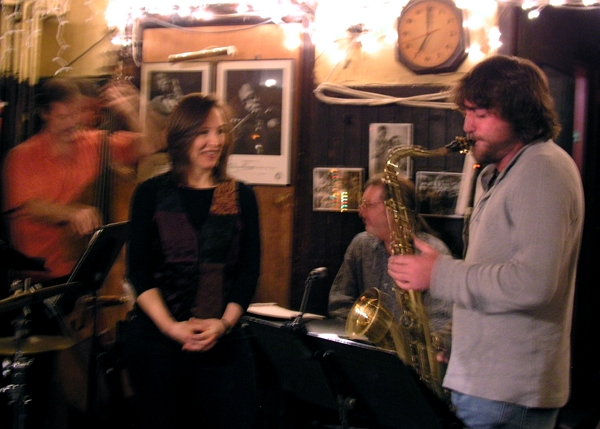
There’s the dolled up one, presented here http://www.newsweek.com/id/214124 by Newsweek in late August. Then there’s the face I saw when she came to New Jersey City University one Sunday afternoon last fall to open her Imagine Peace show in a couple of the school’s galleries. She drew every celeb-watcher in Jersey, and their cameras. The show itself was beautifully presented, full of photos of Yoko and John playing in the spotlight of the world’s attention 40 years ago and asking for peace in much the same way artists of all kinds could and should be doing right now. Viewers were invited in one gallery to take an “Imagine Peace” stamp, get some ink on it, and stamp the words on any of several maps. I put “Imagine Peace” on Australia, where I’ve got a friend who went home recently after 40-plus years in America. As one might expect with her years of experience, Yoko is expert at moving through a crowd, even as the shortest person in the room. At 75 or so, she’s forever young.
